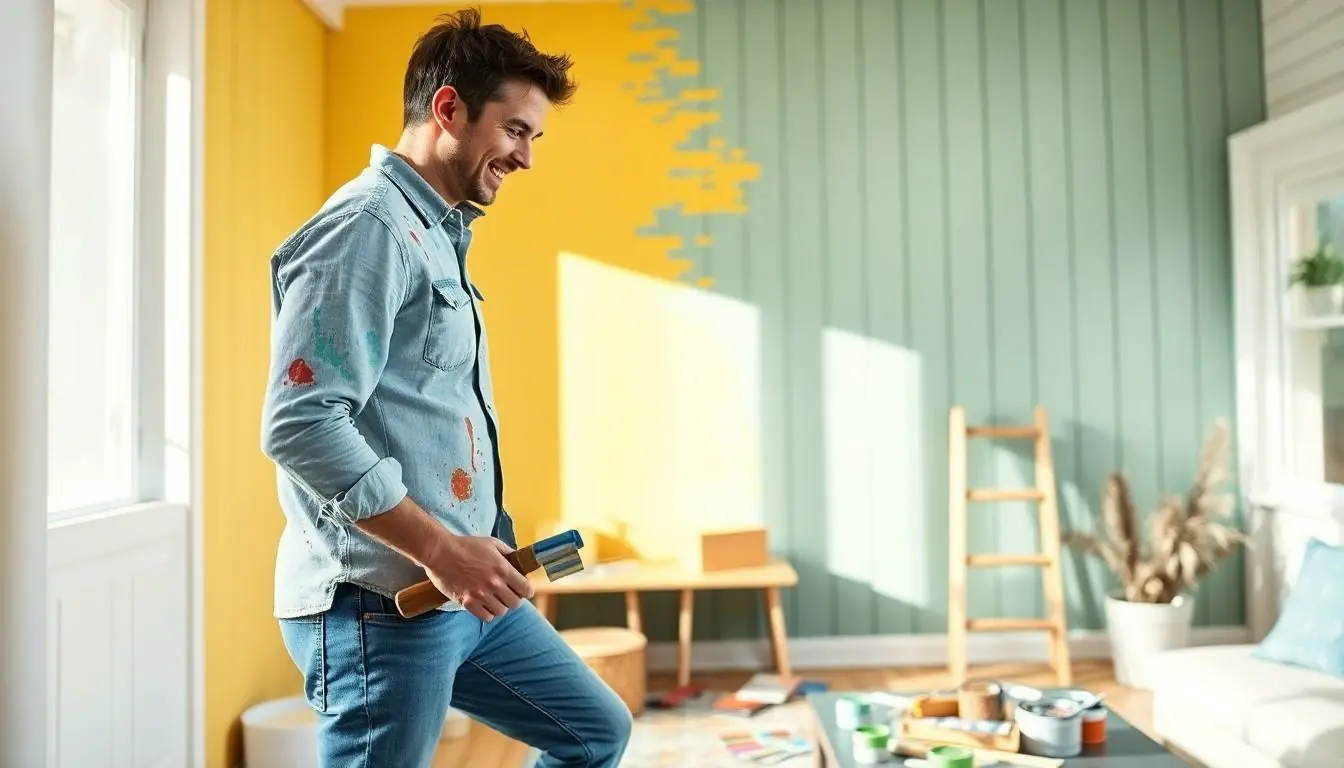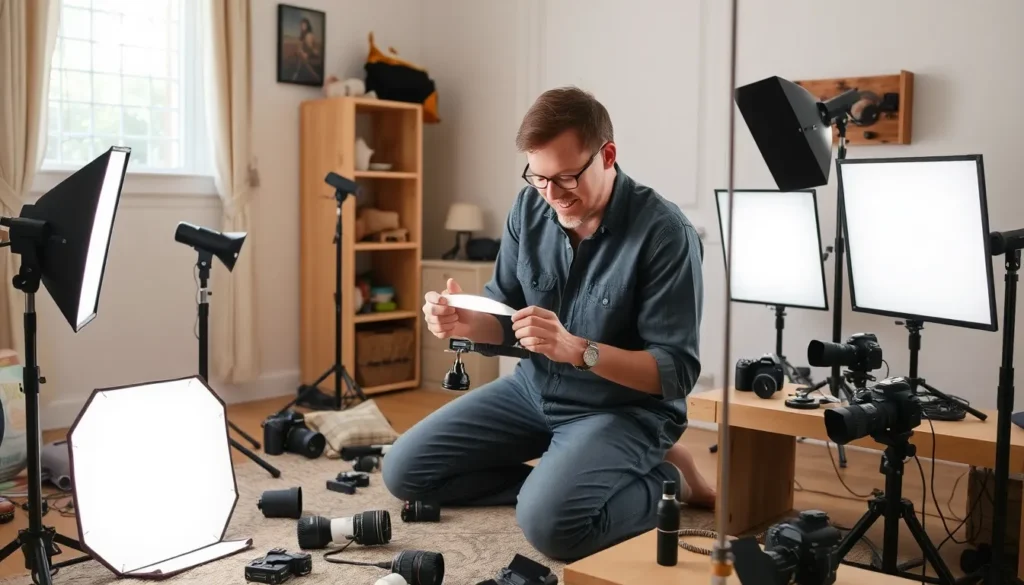Tired of that outdated wood paneling making your space feel like a time capsule? You’re not alone. Many homeowners are discovering that painting over paneling is the secret weapon to transforming drab interiors into stylish havens. With a splash of color and a little elbow grease, those dark, dreary walls can become a vibrant canvas that reflects personal taste.
Table of Contents
ToggleBenefits Of Painting Over Paneling
Painting over paneling offers several advantages, from improving aesthetics to increasing property value. This simple project transforms a space, making it more appealing.
Enhancing Aesthetics
Bright colors and modern finishes can refresh an outdated look. Homeowners often find that a coat of paint introduces a contemporary feel, allowing for a versatile design. Creating an inviting atmosphere becomes easier with lighter shades that reflect light. Textured paneling, when painted, can add depth rather than visual clutter. This practice helps express individual style, transforming spaces into personal sanctuaries.
Increasing Home Value
Updating paneling with paint can significantly boost a home’s market appeal. Buyers often prefer properties with modern aesthetics, which a fresh coat can provide. Statistics indicate that homes with updated interiors sell for up to 10% more. Clean, painted paneling conveys a sense of upkeep and care. This attention to detail attracts potential buyers, making properties stand out in competitive markets.
Preparation Steps Before Painting

Preparation is crucial for successful results when painting over paneling. Properly cleaning and repairing the surface ensures the paint adheres well and looks fresh.
Cleaning The Paneling
Cleaning the paneling effectively removes dirt, dust, and grease. Use a mixture of warm water and mild soap for routine cleaning. A sponge or cloth works well to apply the solution and scrub gently. Rinse with clean water to prevent soap residue from affecting adhesion. Allow the paneling to dry completely. Tackling stains earlier can save time later; vinegar can eliminate stubborn marks. Consider using a degreaser for kitchen paneling, as it often attracts more grime. Thorough cleaning lays the foundation for better paint application.
Repairing Damages
Repairing damages on the paneling is essential for a smooth finish. Inspect the surface thoroughly for scratches, dents, or holes. Wood filler can fix minor imperfections easily. Apply the filler according to manufacturer’s instructions, then sand it down after it dries. Larger gaps may require wood glue and clamps for proper sealing. Loose or damaged seams might need re-nailing to restore stability. Once repairs are finished, sand the entire surface lightly to create an even texture for painting. Prioritize these steps to achieve a polished final appearance.
Selecting The Right Paint
Selecting the proper paint enhances the transformation of paneling. Understanding the best options ensures effective results.
Types Of Paint Suitable For Paneling
Acrylic latex paint suits paneling due to its flexibility and durability. Oil-based paint offers a smooth finish, but it requires longer drying times. Primer serves as a solid basecoat, improving paint adhesion, especially on glossy surfaces. Specialty paints, like chalk and milk paints, provide unique aesthetics, ideal for rustic or vintage styles. Choosing a high-quality paint brand contributes to longevity and minimizes the need for frequent touch-ups.
Color Considerations
Bright, light colors create an illusion of spaciousness in smaller rooms. Dark shades add boldness and warmth, making larger spaces feel cozier. The chosen color should harmonize with existing décor for a cohesive look. Consideration of natural light levels impacts how colors appear throughout the day. Neutral tones offer versatility, allowing easy changes in décor without causing clashes. Testing paint swatches against paneling helps visualize the final look before committing.
Techniques For Painting Over Paneling
Effective techniques enhance the appearance of painted paneling. Priming and application methods play crucial roles.
Priming The Surface
Proper priming ensures paint adhesion and a smooth finish. Select a high-quality primer designed for wood surfaces to seal the paneling. Applying the primer with a brush or roller provides even coverage. It’s important to cover all areas, including grooves or cracks, for consistent results. Allow the primer to dry completely, as suggested by the manufacturer. Skipping this step can lead to paint peeling later, impacting durability and appearance.
Application Methods
Choosing the right application method impacts the overall finish. Brushes, rollers, and sprayers all have benefits. Brushes offer control for detailed areas, while rollers cover larger spaces quickly. Sprayers yield a smooth, even coat but require careful handling to avoid overspray. Light, even strokes help minimize drips and ensure thorough coverage. Applying multiple thin coats enhances durability, yielding better results than a single thick coat. Review the paint instructions for drying times between layers for optimal outcomes.
Painting over paneling offers a practical and stylish way to breathe new life into outdated interiors. With the right preparation and paint selection homeowners can achieve stunning results that elevate their living spaces. This transformation not only enhances aesthetics but can also lead to increased property value.
By choosing the right colors and techniques homeowners can create inviting atmospheres that reflect their personal style. Whether opting for bright hues or neutral tones the impact of a fresh coat of paint is undeniable. Embracing this trend allows for a modern touch while maximizing market appeal in a competitive real estate landscape.



